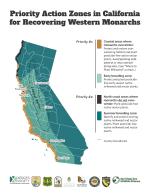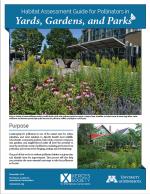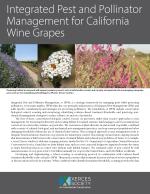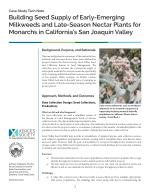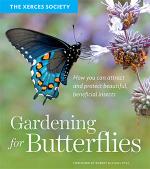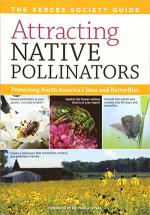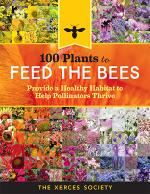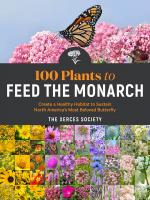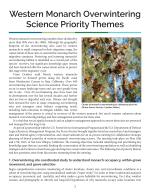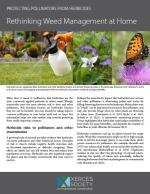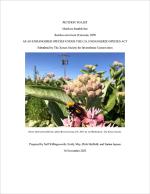As a science-based organization, the Xerces Society produces dozens of publications annually, all of which employ the best available research to guide effective conservation efforts. Our publications range from guidelines for land managers, to brochures offering overviews of key concepts related to invertebrate conservation, from books about supporting pollinators in farmland, to region-specific plant lists. We hope that whatever you are seeking—whether it's guidance on making a home or community garden pollinator-friendly, advice on developing a local pesticide reduction strategy, or detailed information on restoring habitat—you will find it here!
Find Publications
Use the search functions to sort by publication type (books, guidelines, fact sheets, etc.), location, and/or subject (agriculture, gardens, pollinators, pesticides, etc.).
The western monarch population is at a critically low level. Work to improve monarch habitat in California is more important than ever. This fact sheet identifies the most important actions that should be taken in five different regions of California, and provides notes and guidance on selecting the appropriate species of milkweeds and nectar plants.
The goal of this tool is to evaluate pollinator habitat at a given urban, suburban, or rural site and identify areas for improvement. This process will also help users prioritize the most essential next steps to take for pollinators at the site.
Integrated Pest and Pollinator Management, or IPPM, is a strategic framework for managing pests while protecting pollinators. As its name implies, IPPM takes the core principles and practices of Integrated Pest Management (IPM) and adds specific considerations and strategies for protecting pollinators. The foundations of IPPM include conservation biological control, scouting and monitoring, identifying evidence-based treatment thresholds, and practicing non-chemical management strategies to reduce reliance on and use of pesticides.
Case Study Tech Note
This case study presents a summary of a three-year project to increase the commercial supply of native plant materials for western monarchs, specifically early-emerging milkweeds and late-season nectar plants of San Joaquin Valley ecotypes.
Ecological Pest Control Solutions
Lady beetles, syrphid flies, lacewings, and other beneficial insects prey upon crop pests, reducing or eliminating the need for pesticides. This comprehensive guide describes how to recognize these insects and their habitat, and how to evaluate, design, and improve habitat for them. Authors Eric Lee-Mäder, Jennifer Hopwood, Mace Vaughan, Scott Hoffman Black, and Lora Morandin discuss the ecology of native beneficial insects and how to increase their numbers on your farm through simple conservation strategies.
How you can attract and protect beautiful, beneficial insects
Protect and nurture the best-loved of garden guests: butterflies, nature’s kaleidoscopes with wings. The Xerces Society introduces you to a variety of butterflies who need our help, and provides suggestions for native plants to attract them, habitat designs to help them thrive, and garden practices to accommodate all their stages of life.
Protecting North America’s Bees and Butterflies
Attracting Native Pollinators is Illustrated with hundreds of color photographs and dozens of specially created illustrations across four sections: pollinators and pollination, taking action, bees of North America, and creating a pollinator-friendly landscape. Read it for your own enjoyment or use it as a teaching guide to inform others.
Provide a Healthy Habitat to Help Pollinators Thrive
100 Plants to Feed the Bees offers browsable profiles of 100 common flowers, herbs, shrubs, and trees that attract bees, butterflies, moths, and hummingbirds.
Create a Healthy Habitat to Sustain America’s Most Beloved Butterfly
100 Plants to Feed the Bees provides at-a-glance profiles of plants that provide monarchs with nourishment. The listed plants are all commercially available, and range from milkweeds to flowering plants, shrubs, and trees that provide nectar for the adult butterfly, including those that sustain monarchs in their great migration.
A group of forty key researchers, land managers, state and federal agency representatives, and conservationists for an in-person meeting in May 2023 for collaborative strategic planning of shared priorities of western monarch overwintering science. This fact sheet summarizes the priority themes and key questions that arose from the meeting.

